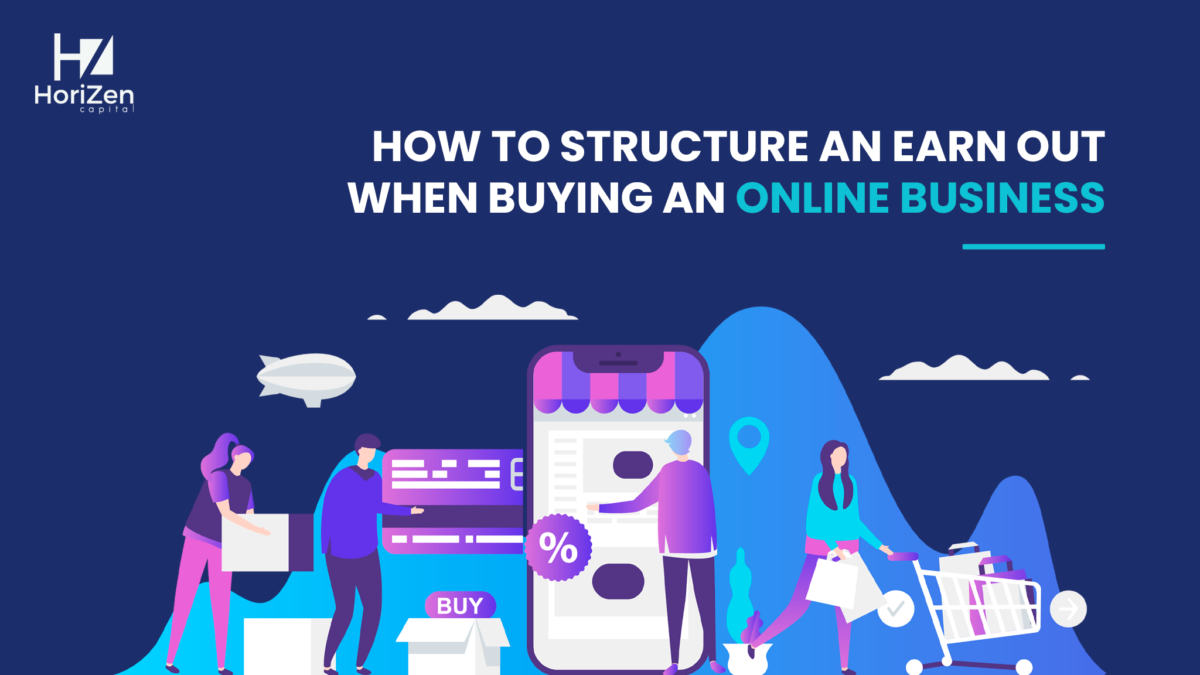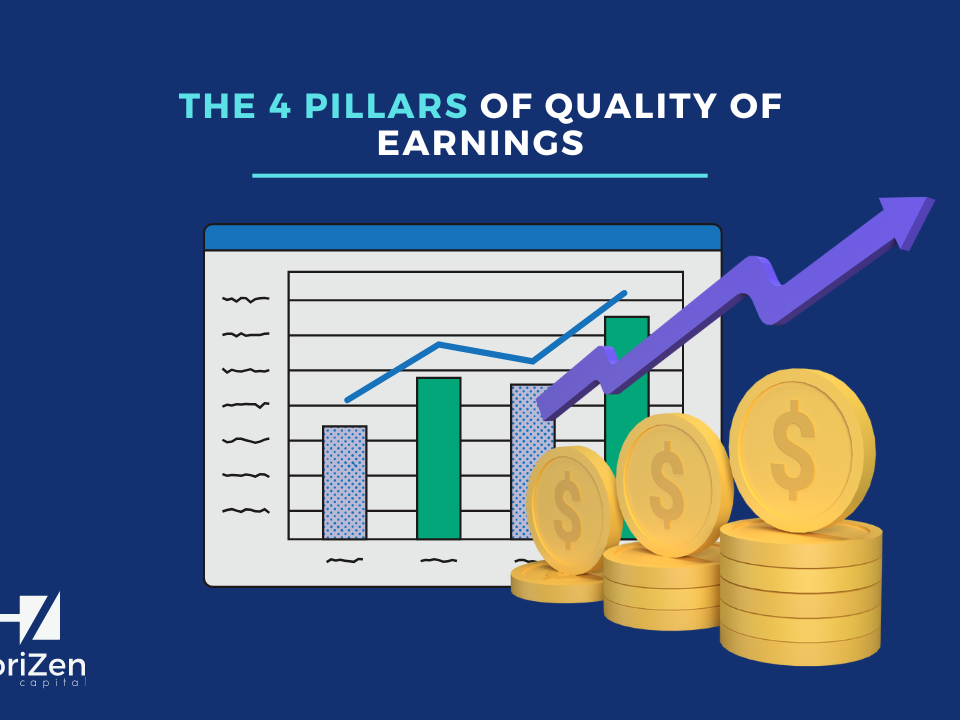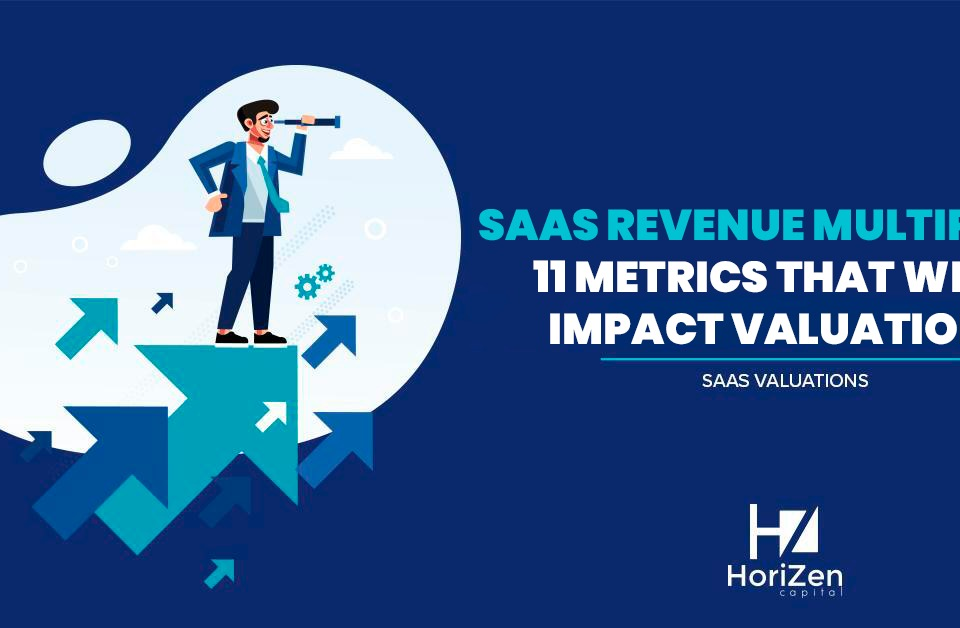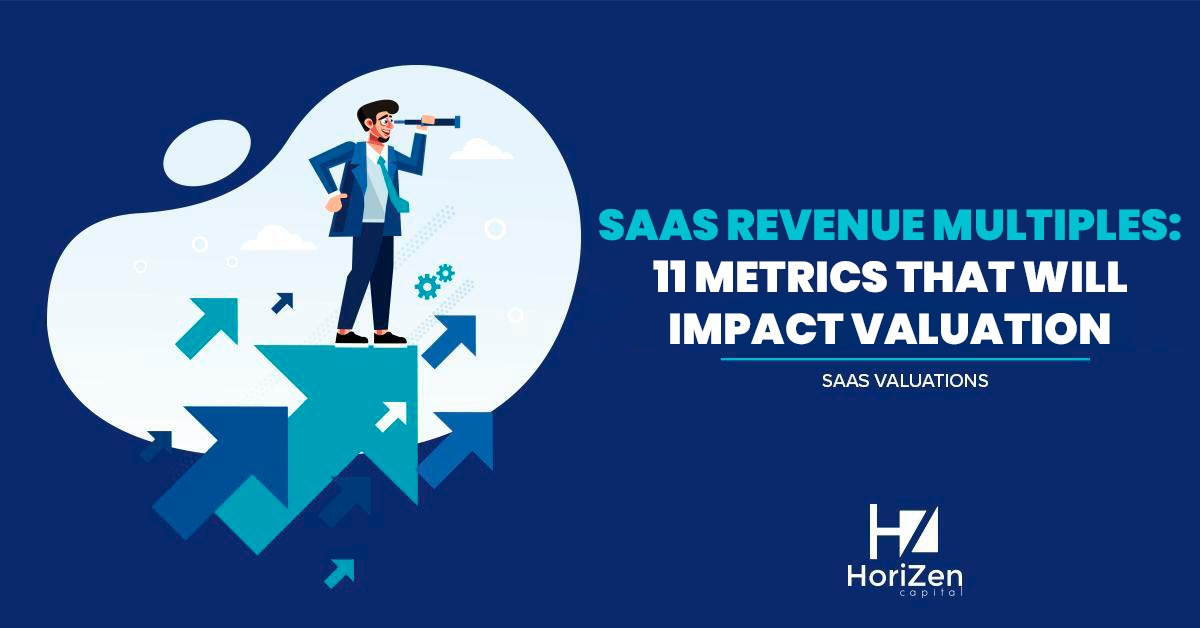
SaaS Revenue Multiples: 11 Due Diligence Metrics That Will Impact Your SaaS Valuation
06/23/2022
PPC For SaaS – Top Experts Reveal Advice to Scale: Dylan Hey & Luis Camacho
09/30/2022Earn outs are a common contractual mechanism used to structure M&A deals. Including an earn out period as part of the purchase price structure is extremely useful to facilitate an agreement between a buyer and a seller when there is not a shared consensus on the price of the company for sale. They’re a smart tool to bridge valuation gap. Earn outs can also be a great way to incentivize sellers to stay post-transaction and drive performance.
Entrepreneurs and acquiring companies must understand the mechanism of earn outs to be best prepared to structure a transaction and be aware of the different thought processes that go behind it.
In this post, we will review the key elements and tips on how to structure an earn out mechanism. It often start by asking yourself where your priorities and preference lie.
For instance would you rather pay a lower price for the company but pay most of it upfront or to pay a higher price but contingent to future performance? How much debt would you like to include to finance the transaction and can earn out help you service the debt more easily from the cash flow of the business post sale? And what is your assessment of risk / rewards to the seller that should be tied to earn out payments? Getting financial advisors can help you in this process and help you ask yourself the right questions.
What Is An Earn Out and How Does It Impact Purchase Price?
An earn out is a provision written into a financial transaction agreement stating that the seller of the business will receive additional compensation if the firm achieves predetermined financial goals over the course of the earn out period. The process reduces the risk for business owners of not receiving a fair valuation for their company and for buyers it reduces the risk of paying an excessive amount if the future performance does not live up to its promises.
There also exist other types of deferred payment that can help a you share the financial risk with the seller to some extent. The two most common ones are
- Seller note: the seller agrees to provide the financing of part of the purchase price to the buyer and accrues financial interest until the buyer repays the outstanding amount. This type of deferred payment is not tied to future earnings or to company’s financial performance as long as the company generate enough cash flow or has enough cash in the bank to service the loan
- Retention amounts: a third party holds part of the purchase price to guarantee the cash is available to cover potential warranty claims. Once the warranty period expires the retention amount is unlocked and sellers receive it as a pay out.
4 Reasons To Use An Earn out as Part of the Total Purchase Price

The structure of an earn out is now clear: it consists in paying a fixed amount at time of purchase and a variable payment after the purchase over a pre-determined earn out period that can be based on future growth.
But why should acquiring companies use earn out payments? It is essential to understand both the entrepreneur’s and buyer’s ways of thinking to efficiently structure a deal. There can be several situations that an earn out period can help with.
1 – Seller Is Expecting a Higher Total Consideration Than What You’re Ready to Pay Upfront
Buyer and seller have conflicted interest and a difference between the price the buyer is willing to pay and that the seller expects is almost unavoidable. Earn outs can often help to bridge the valuation gap.
For instance, assume that seller has asked for 6x profit but your most serious offer can only amount to 5x. If you really want to get the deal done, you can agree to increase the overall price you will pay but split that price between a guaranteed amount and an earn out payment and tie the additional payment to the condition that the company achieves certain milestones post-acquisition, like a 25% net profit growth next year or a 30% year on year future growth over the next 3 years.
Then, according to the situation, you might either keep the upfront cash you previously offered at 5x net profit and add a 1x net profit earn out on top, or you might request that seller share part of the risk you are taking by offering them more potential payout and in exchange reduce the upfront payment to 4x net profit plus 2x net income earn out to meet their 6x net profit price expectation.
From your perspective you’re sending the message “If your firm actually delivers on the promised growth, then I am happy to pay you the multiple you were asking for.” This makes a lot of sense if you just bear in mind that the value of a firm is based on its future expected cash flow, not the ones it delivered in the past.
Earn outs can be extremely useful for firms that have just enacted strategic changes. Take for instance a business that has just launched a new product or changed its pricing strategy. Such choices might prove beneficial in the long run, but they add uncertainty for the buyer as it is not clear yet whether they will benefit or hurt the business. Agreeing on an earn out can help justify a higher valuation as the seller is basically agreeing to share the risk linked to this uncertainty.
2 – Earn Out Period Help Buyers Feel More Confident About Completing The Deal
The due diligence that you will conduct can reduce the risk of overpaying for the business but cannot eliminate it. For example, it might be the case that the revenue of the firm is very concentrated which means a small number of customers accounts for most of the revenue. Or it might be the case that some of the long-term customers decide to cancel their contracts once the company is acquired.
Alternatively, as a prospective buyer you might not be entirely familiar with the industry or market the target is operating on, and you can be worried that revenue might decrease in the future because of external factors such as new regulations or the launch of alternative technologies by competitors. In such cases, you might ask the seller to share part of the systematic risk by underwriting an earn out. In this situation, you are basically aiming to get protection against downside risk rather than looking for guarantee that the business will perform well.
For instance, you could define an earn out as 60% of the total purchase price paid upfront, 20% paid after one year, and 20% after two years under the condition that the ARR does not fall below a preset level.
In the past we structured a deal where we wanted to take over the management of the company. The seller was unwilling to tie the earn out to performance as it would be outside of his control. We took the current ARR and the historical average churn and then listed all the seller’s current clients. We then agreed to pay the full earn out as long as the existing clients were still generating at least [(1-churn rate) * current ARR] in revenue.
That was our way of saying, “We think that the full price we both agreed on is fair as long as your current customers do not churn faster after you’ve left.” Protecting the your downside might be even more important than delivering outstanding growth, especially when you are leveraging the deal with debt.
Being very transparent, the trust that you build with the seller and the comfort they can provide by having clean financial reporting will greatly help in earn out negotiation.
3 – Earn Outs Are a Good Way For Buyers to Reduce Risk of Defaulting on Senior Debt

It is rather common (especially in the US thanks to the SBA loans) to use debt to acquire micro SaaS companies. Suppose that the amount used to finance the acquisition is 70% of the purchase price. You will want to repay part of the debt thanks to the cash flow generated by the business.
If you cannot meet your financial obligation towards the bank, you might risk legal pursuit at a personal level or seizure of personal property, which makes the risk for you as a dealmaker much higher than a simple bad business decision. An earn out structure can help mitigate that risk.
Example of a Leveraged Deal
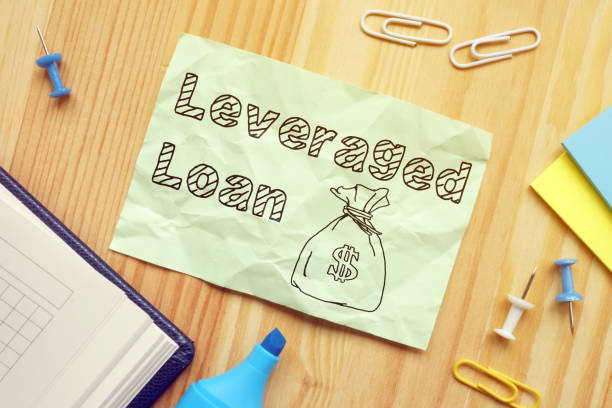
In a recent deal we structured, we used leverage to meet the seller’s asking price. To service both the loan and the earn out, we needed the business to generate a minimum of $3 million per year for the first two years.
The business was at $4 million annual cash flow when we looked at the financials, but profit had seen an increase of 200% which was without doubt correlated to Covid-19 and lock down restrictions. Our assumption was that revenue could soon revert to $2 million per year.
And yet, the owner and their financial advisors were very pushy to value the company on the basis of a last two-year average profit which amounted to $3 million. Thus, we made the earn out conditional on us meeting our debt obligations, which meant that we’d only pay the earn out if the business generated at least $3 million per year going forward.
Different Ways to Negotiate the Earn Out Structure
- Buyer and seller can agree to the earn out structure and add the condition that if the business generates above $3 million cash in any given year, buyer will pay outstanding earn out faster. (For instance, for an earn out of $2 million paid over two years, you could argue that if in its first year the business generates $3.5 million, seller gets $1.25m out of the $2m.)
- If the issue is only due to the capacity of the company to service the debt, in lieu of an earn out you can offer to structure the deferred payment as a seller note and add a provision that allows the you to postpone repayment if the company does not generate enough cash in any given year. A seller note is a debt instrument and must be repaid eventually, regardless of the performance of the business which, compared to an earn out, gives seller greater certainty of being paid the full purchase price.
4 – Earn Outs Act as an Incentive to Motivate Management of the Acquired Company Post-Transaction

Once a founder has cashed out, even if the bond and attachment to their company is strong, it is very hard for any human being to continue to show the same motivation and determination to make a business successful if they’re not shareholders anymore.
If the condition of the deal is to keep the seller running the business after you have acquired it their shares, it is in your best interest to incentivise seller to make sure the business does deliver the performance you are expecting as part of your investment thesis.
If Management can over-deliver, you may even be willing to go above the initially agreed price and share the fruits of the over-performance over say the next 3 years. The message being “If you make me richer, I’m happy to show my gratitude and give you your fair share”.
In many deals on which a private equity firm is an acquirer, it’s common for 10% to 30% of the purchase price to be dependent on an earn out. Such design encourages the seller to remain with the business to maximize the purchase price and helps ensure that the acquisition is successful for the buyer. It is a win-win strategy.
Earn out structure may also help optimize tax. As the payment is contingent on the earn out, the amount is not taxed until it is received. This structure decreases the tax burden incurred when the sale is closed in which case a higher earn out percentage may be beneficial for seller.
How to Structure an Earn Out To Mitigate Risk

An earn out agreement can contain a lot of different earn out clauses to define the structure of the contingent payments and can be based on different financial metrics like net income, customer retention or other performance metrics. But the earn out formula is not the only thing to think about when structuring a deal with deferred payments. Let’s review the different components of earn outs one by one :
Cash Upfront vs Deferred Payment
Despite every deal being structured differently, on average the greater the discrepancy between the price asked and the one offered, the less the cash paid upfront. Higher uncertainty entails a smaller lump sum payment.
As a prospective buyer you are generally willing to pay a premium to diminish the uncertainty of future cash flows. On the other hand, the seller can accept a higher risk to have a greater payment. Although the proportion of cash upfront to earn out can vary significantly, the usual earn out ranges from 10 to 30 percent.
Deals with more than 70% earn out are less common, but they can be structured that way in the case of distressed firms that the buyers want to turn around. They might also arise when a strategic buyer acquires the business aiming to exploit a wide array of synergies, such as a large customer base or common distributors or when the seller does not want to sell without the possibility to receive a high valuation if they deliver on their business plan.
Key Performance Indicators
KPIs are often one of the trickiest elements of the deal. Like a management incentive scheme, there can be many ways to manipulate the numbers in order to pay the lowest possible amount. However, this part mainly relies on the relationship and trust between the buyer and the seller.
The most used metrics are Revenue or EBITDA as they are more difficult to manipulate and provide a straightforward measure of performance. However, it is also possible to use operational metrics such as the number of new customers, average revenue per user, and similar ones.
Example of an Earnout
In this example, the buyer is a financial investor, and the seller remains in charge of the operations.
Structuring a revenue-based earn out naturally makes the seller want to focus on increasing revenue regardless of the profit margin and thus incentivizes seller to spend a lot in marketing without necessarily trying to optimize each dollar spent as long as it increases the top line.
Structuring an EBITDA-based earnout incentivizes the seller to cut down costs or to delay important hiring. Such decisions may not be ideal for the long-term development of the company.
Defining a good earn out target is all about finding the right balance, which can be found by combining a target of revenue growth and a minimum EBITDA margin for instance.
Nonetheless, in the case in which the seller is not involved post-transaction, it becomes way more difficult to control how KPIs are computed and managed. In our opinion, it would be best to avoid a pure EBITDA-based earn out. Even without malicious intent, EBITDA may not hit the earn out target because of genuine strategic decisions. For instance the firm might decide to develop a new product which will drive the developer costs up short term but will greatly benefit the company on the long run.
For recurring revenue businesses such as SaaS, a growing ARR would be in the best interest of the owner. Thus, if the entrepreneur is not involved in post-transaction management, as a rule of thumb we would suggest structuring the earn out around ARR. Such metrics would also be easier to check than EBITDA metrics whose computation can easily be manipulated.
Overall, the best approach for the seller is to carefully consider which KPIs to use, their impact on the business, and clearly state how they should be computed. In the case of a strategic buyer, who aims to integrate the target into their own operations, the structure of the earn out and how to track metrics becomes even trickier.
Even if the seller continue operating the business post-transaction, you’ll also need to discuss what would happen if you were to grow your newly acquired business through strategic acquisitions.
Time Period in Which the Earn out be Calculated and Paid

A common practice of the market is to have an earn out horizon between one and five years. From our experience, within the microSaaS sector, a typical timeline would range from one to three years.
If the seller is not involved post-acquisition, a one-year horizon is common, while negotiating over two years becomes more complex and harder for the seller to accept.
What Happens if Targets are Only Partially Hit or KPIs are Temporarily Missed?
Consider as an example a $3 million earn out paid over three years under the condition that the business maintains an ARR of at least $5 million each year. Starting from these assumptions, you can think of dozens of ways to structure the details of the earn out.
Let’s first look at three different possibilities, with each structure assuming seller did meet your ARR targets each year.
- Each year $1 million of earn out is paid to seller.
- The $3 million is paid as a lump sum all at once after 3 years.
- You design a progressive payout, such as 20 percent is paid in the first year, 30 percent in the second, and 50 percent in the third.
You can already see that each of these structures may change slightly the perceived value and risk that you get out of the deal.
On the other end of the spectrum, let’s now assume the startup does not meet the $5 million ARR target. A hit or miss structure where the seller gets nothing if KPIs are below target and everything if they are above is generally too harsh to accept for a seller who’s basically taking the risk to get nothing even if they deliver 95% of the agreed performance target.
However, designing a linear payout in which if the company achieves $2.5 million ARR instead of $5 million, the seller gets 50 percent would not be fair either.
Floor and Ceiling KPIs
To plan a fairer structure while keeping things as simple as possible, we would advise you to agree on a floor and ceiling KPI. In our example, the ceiling would be $5 million ARR. You could set the floor at $4.5 million ARR. And if the company hits an ARR between the floor and ceiling, then the earn out paid to the seller is a proportionate amount of the earn out, with floor corresponding to 0 percent of the earn out and ceiling to 100 percent.
In other words, if ARR at the end of the year is $4.75 million, seller would be paid 50 percent of the earn out for that year.
Catch-up Clause
Having a catch-up clause or not can make a big difference. If the earnout structure covers several years with milestones for each year and that seller miss one of these milestones, they may try to negotiate negotiate that if they do hit next year’s milestone, or overcompensate the following year, then they are entitled to the previous year earn out payment on top of current year’s.
Timing of the Funds Transfer
Figuring out timing of milestones is one thing, agreeing on timing of actual contingent payment is another and is another element that you can include in your negotiation.
For example, seller might hit the earn out target for a $1 million earn out amount but agree to receive the payment six months later. In other words, that would be a way to offer a 0% interest credit line to you and gives you six additional months of cash flow from the business to pay the earn out. If sellers are more interested in the total amount they receive from the sale than the timing of receiving payment this can be a good argument to make it easier for you to agree to seller’s asking price.
Account for All Scenarios in Your Purchase Agreement
While structuring a deferred payout, never hesitate to be too thorough and cover any exceptional situation that may occur. For example, it is essential to determine what happens if you resell the company before the expiration of the earn out period, divest part of the business, or make significant changes to the daily operations of the business like discontinuing one of the products.
Seller can also require to add a capsule clause granting access to certain information to ensure he is paid what he is owed. For instance, you could contractually agree for seller to have a type of audit right and be granted full access to accounting or bank statements upon demand.
In Summary
In general, it is always best practice to seek the help of a good SaaS M&A advisor and a good lawyer. Earn outs are a great card to have up your sleeve when it is time for you to consider finding a new owner for your business. When you do, you can keep in mind all the elements that we walked you through in this post structure your LOIs properly.
If you come to mastering the notion and details of earn outs, they can open the door to better align your interests with seller’s and help you reach a mutually satisfying agreement.
